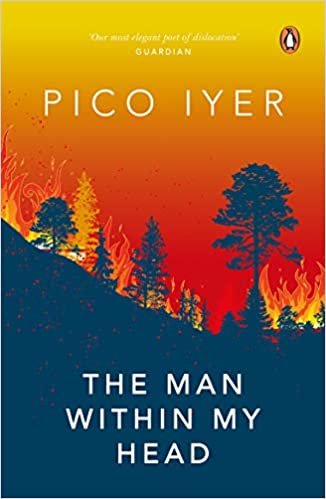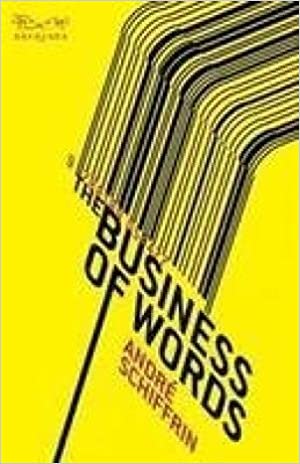Journey Towards Selfhood
Over a decade ago I did a regular column for Business World. It was on the business of publishing. Here is the original url.
***

The Man Within My Head is Pico Iyer’s part-tribute to his “adopted” literary parent, Graham Greene, but also part-travelogue and part counter-biography. The title also echoes Greene’s The Man Within. Iyer initially wrote 3000 pages over eight years to finally reduce it to the 256 pages that were published. It is very clear that this is not a memoir. It is an exploration of ideas that are at the core of Greene’s writings, with a significant one being that of the “burden of displacement”. For Iyer, Greene strikes a chord on many levels. But at the core of it lies the fact that they both seem to share a fascination and a preoccupation with the individual, the sense of displacement in the world of migrants. How do you write about them? How do you live their life? How do you develop a cold detachment and yet experience something so acutely sensitively that it will be transmitted and resonate strongly in the literature written, whether it is an essay or a novel. Beyond these basic literary explorations, Iyer does wonder if it “was only through another that I could begin to get at myself?”
For him Greene could never be a fantasy figure but someone who would also help shed some light on his relationship with his real father. The dad who otherwise remained a distant figure, an academic and a highly respected theosophist, yet who flew half way across the world (from California to England) to meet an asthmatic Pico, after the wheezing son had made an emergency call or who left an emotional message on his son’s phone, after reading Pico’s essay on Greene “Sleeping with the Enemy”, published in Time magazine. It was the last time that Iyer ever heard his father, since he soon thereafter succumbed to complications due to pneumonia. But what distressed him even more was that “it was a shocking thing, “to hear his father sob, especially someone who was famous for his fluency and authority to lose all words”.
Faith And Fortitude
Greene’s tussle with Catholicism is legendary. Much has been said and written about it. For Pico Iyer, it was the travels with his old school friend, Louis, who had discovered religion that much of Greene’s point of view on religion made sense. “I began to understand how one could be transported-and left in the cold-by the spiritual surrender of another. God, if He exists, has to be something larger, more complex and mysterious than just a headmaster reading rules. Sometimes you know He exists, as with a love, only when He’s very far away and you’re shouting out your rage at Him.” This is probably what prompted Pico Iyer to write in his Time essay that “Greene’s special grace-his curse-was to see ‘the folly and frailty of everyone around him.’ It’s never external devils that undo us, I suggested, but rather the ones that rise up in ourselves and those people who have the power to awaken them within us. Greene was ‘never a truer Christian,’ I concluded, ‘than when forgiving his un-Christian enemies.” But Greene was apparently reluctant, almost ashamed, to be seen being kind; it was only at his memorial service that Muriel Spark revealed that he had sent her a little money every month so that she could go on writing-accompanied by some bottles of red wine, so she wouldn’t feel like a charity case.
Shadow Of The Alter Ego
Pico Iyer is so obviously haunted and possessed by the notion of Greene (but he “never wanted to meet Graham Greene, I often told myself”). To get into the skin of another writer, live their life, but make it your own is astounding. To understand the choices the senior writer made, many times via your own experiences and epiphanic moments is not always easy to write about, although Pico Iyer makes it seem so effortless. At a time when memoirs and creative non-fiction writing is fashionable, to write a memoir that is part-travel part-litcrit part-tribute and part-self-exploratory, is quite a feat. There is no denying the huge influence Graham Greene has had upon Pico Iyer as a writer and an individual. He also shares a trait with Greene, “If you have a dangerous curiosity about the world, or if you’re a writer of sorts, trained to collect observations, you become in such situations, shameless. “There is a splinter of ice,” Greene wrote in his memoir, ‘in the heart of a writer,’ and he needs that sense of cool remove to do his job, as any diagnostician does.” For both the writers, “travel was most a way to see more clearly the questions and shadows it was easy to look past at home”. In a recent interview with Charles Rose, Iyer says that “eight years were spent on this book and yet, I could spend my life doing it. The way you have with a close friend.”
The cover design of the American edition of the book is striking. It has two photographs — the top one is of Greene and the lower one of Pico with his father. The careful arrangement of the book, title and cover and of course the content, shows not only the care with which Pico Iyer has put in thought and effort in to his latest book, but also how very important it is to him to understand, figuratively speaking, “both his fathers”, if you will. The Man Within my Head is a treasure. It is worth buying and savouring.
15 Jan 2021

